If you feel like March has been a good month for auroras ... you're right. According to 75 years of historical records analyzed by solar physicist David Hathaway, the months around equinoxes are almost twice as likely as solstices to have geomagnetic disturbances. Indeed, according to this plot, March may be the best month of the year for Arctic auroras:
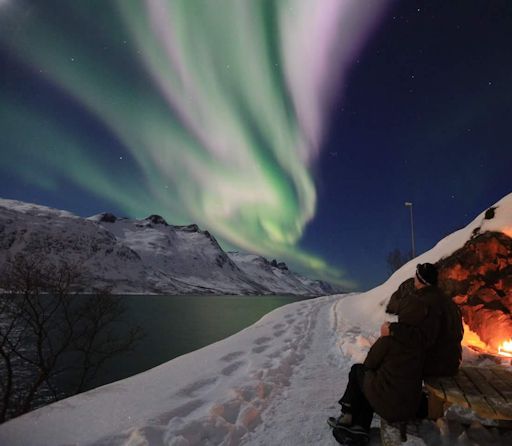
Photo credit: Caroline/AdventureMutzz of Ersfjordbotn, Norway. Mar. 8, 2017
Researchers have long known that auroras favor equinoxes, but they didn't fully understand why until NASA launched the THEMIS satellites 10 years ago. In 2007, THEMIS detected magnetic 'ropes' occasionally connecting Earth's upper atmosphere directly to the sun. Solar wind particles flow in along these ropes, providing energy for geomagnetic storms and auroras.
It turns out that rope-like magnetic connections between the sun and Earth are favored in spring and fall. It's a matter of geometry: As Earth goes around in its orbit, Earth's tilted magnetic poles make different angles with respect to the Sun, tipping back and forth with a one-year cadence. Around the time of the equinoxes, Earth's magnetic field is best oriented for "connecting-up" with the sun.
Northern spring is coming. Arctic sky watchers, enjoy the green!
Bron: http://spaceweather.com/
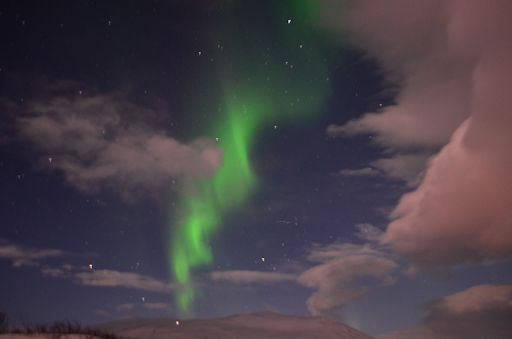
© Carson Reid
"Right after I took this photo, the lights intensified and I completely stopped taking pictures," he says. "All I could do is stare. It was amazing."
Reid is a member of Earth to Sky Calculus. This week he's in Sweden with a team of 6 other students launching space weather balloons into the Arctic stratosphere. So far they've launched 3 balloons in only 5 days. One of the balloons went up at night to photograph auroras from 100,000 feet. Did it work? The payload is still being recovered from the Arctic tundra. Stay tuned for results.
Bron: http://spaceweather.com/
Een groene uitbarsting en jawel eindelijk weer eens een zonnevlek te zien
Op dit moment zitten we in een G1 klasse zonnestorm. Deze storm is afkomstig van deeltjes die "ontsnapt zijn uit het grote coronale gat, die langzaam weer aan het "wegdraaien" is.


De snelheid is op dit moment circa 614 km/s en zorgt weer voor mooie foto's:
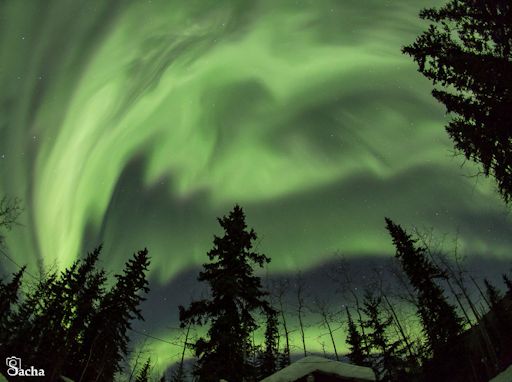
 ©Sacha Layos
©Sacha LayosHet heeft even geduurd, maar er verschijnt een heuse zonnevlek! Eens afwachten wat die nog gaat produceren.

Bronnen:
http://spaceweather.com/
http://solarham.net/
http://services.swpc.noaa.gov/images/planetary-k-index.gif
Prachtige aurora's en langzaam aan eens wat meer zonnevlekken:
Geomagnetic storms are circling Earth's poles for the 2nd day in a row as a solar wind stream continues to buffet Earth's magnetic field. Today, the solar wind speed has quickened to more than 700 km/s, re-energizing storms that began on March 27th when Earth made first contact with the stream. High-latitude sky watchers should remain alert for auroras. Free:Aurora AlertsLast night outside Fairbanks, Alaska, aurora tour guide Marketa Murray photographed a remarkable outburst of Northern Lights:
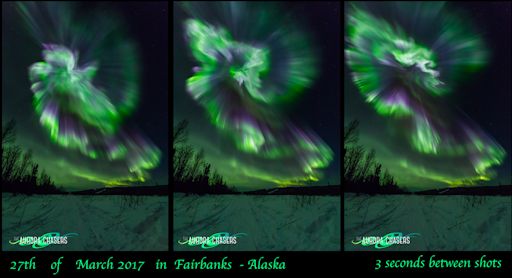
©Marketa Murray
"Each of these photos is separated by only three seconds," says Murray, who also found time for a rare self-portrait.
The Alaska outburst occured during a G2-class geomagnetic storm on March 27th. At the same time, people were seeing Northern Lights in the USA as far south as Michigan, Wyoming and Minnesota.
Bron:http://spaceweather.com/
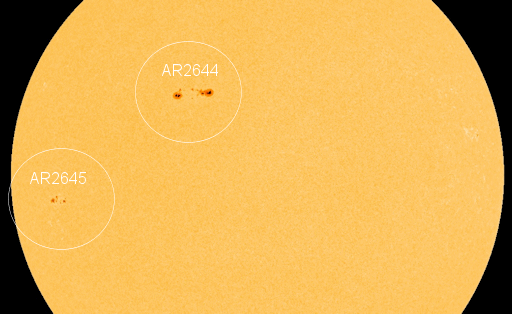
Zonnevlek AR 2644 heeft een beta-gamma magnetisch veld, dat M klasse zonnevlammen als resultaat kan hebben.
AR 2645 produceert c klasse zonnevlammen, maar is wel actiever dan AR 2644.
Bron: http://spaceweather.com/
De zon wordt wakker
Op 1 april (nee het is geen grap), spuwde de zon een zonnevlam M4.4 uit, op 2 april zelfs een M5.3, een M5.7 en een M2.3! Deze zonnevlammen waren afkomstig van de zonnevlek AR2644, waar ik eerder al even over heb gesproken.Noaa acht de kans op nog meer M klasse vlammen 60% is en dat er zelfs 20% kans is op een X klasse (de zwaarste) zonnevlam.

Dit was de M4.4 van 1 april:
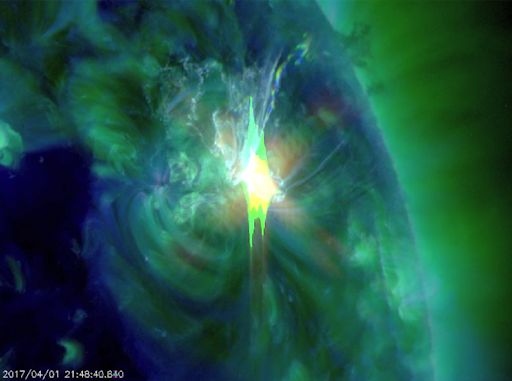

en hier de M5.3 en de M5.7 van gisteren:


In de pacific en de indische oceaan zijn er tenminste 3 significante kortegolf radio blackouts geweest als gevolg van deze uitbarstingen.
Waarschijnlijk zullen de cme's de aarde niet raken, maar dit is nog wat onzeker....so stay tuned
Bronnen:
http://spaceweather.com/
http://solarham.net/
http://spaceweathernews.com/
https://sohowww.nascom.nasa.gov/data/realtime-images.html
Prachtige aurora's door CIR's (corotating interaction regions)
A "CIR" hit Earth's magnetic field on April 8th, and lit up the polar regions with colorful auroras. "We saw an incredible display despite the almost-full Moon," reports B.Art Braafhart of Salla in the Finnish Lapland. "A quiet green arch exploded into an amazing field with fast-moving red, green, yellow, pink, and violet."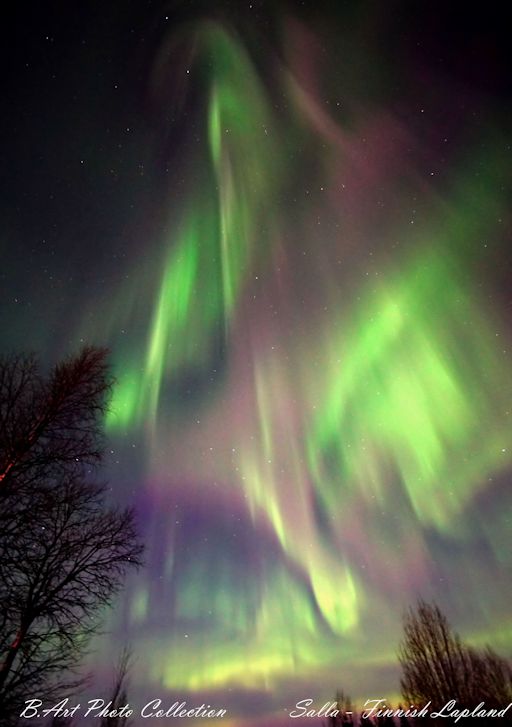
"There was even a color I never saw before in the aurora color palette--something like beige-pink-violet," Braafhart says. "The duration of this corona explosion was only 5 minutes, but what an experience!"
CIRs (corotating interaction regions) are transition zones between fast- and slow-moving streams of solar wind. Magnetic fields from the sun pile up and intensify inside CIRs; when they reach Earth, they can connect and re-connect to our own planet's magnetic field. Magnetic reconnection is an explosive process that does a good job sparking bright auroras.
Bron: http://spaceweather.com/
Zonnevlek AR2644 is weer terug
During the late hours of April 17th, something hurled a plume of hot gas over the eastern limb of the sun. NASA's Solar Dynamics Observatory photographed the splash: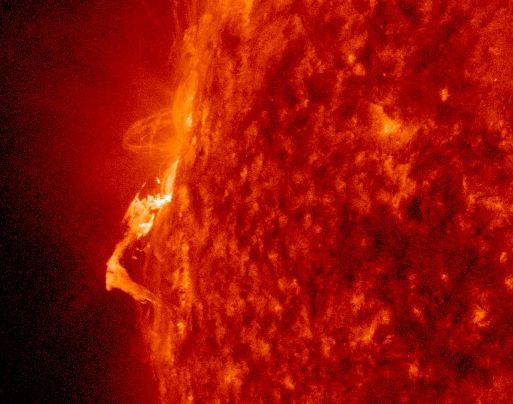
©NASA
The source of this activity is probably returning sunspot AR2644. In early April the active region produced a series of M-class solar flares and shortwave radio blackouts. Now, following a two week trip around the farside of the sun, AR2644 is due to return. Amateur astronomers with solar telescopes are encouraged to monitor the sun's eastern limb for signs of the old sunspot. If it returns with any of its old potency, solar flare activity could increase sharply in the days ahead.
Bron: http://spaceweather.com/
Zonnevlek AR2644 blijft van zich laten horen...nou ja... zien
Na de M klasse zonnevlammen, produceerde hij nu een cme, deze is niet aarde gericht, maar het is toch nog mogelijk dat we wat aurora's te zien krijgen. We houden de foto's in de gaten.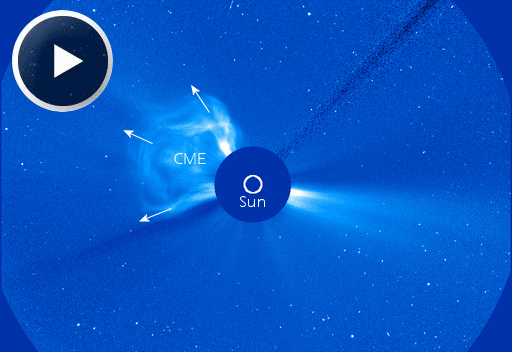
© ESA/NASA Solar and Heliophysics Observatory
Na 2 weken aan de achterkant van de zon gezeten te hebben, verschijnt AR2644 weer en hij blijft actief (mogelijk weer M klasse zonnevlammen). Traditiegetrouw krijgen zonnevlekken een nieuw nummer als ze opnieuw aan "de voorkant" verschijnen. AR2644 zal verder gaan als AR2651
Bron: http://spaceweather.com/
G2 klasse zonnestorm op komst
Afkomstig van het coronale gat (zie afbeelding), zal waarschijnlijk zondag/maandag arriveren, met aurora's tot gevolg. We houden de foto's in de gaten.A large hole in the sun's atmosphere is turning toward Earth, and it is spewing a stream of fast-moving solar wind toward our planet. NASA's Solar Dynamics Observatory photographed the giant fissure on April 21st:
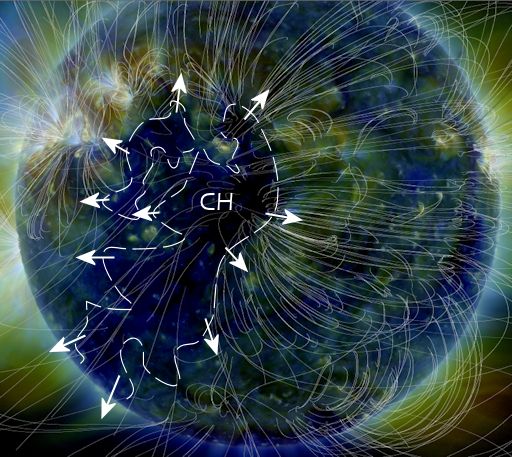
©NASA/SDO
This is a "coronal hole" (CH) -- a vast region where the sun's magnetic field opens up and allows solar wind to escape. Gaseous material flowing from this coronal hole is expected to reach our planet on April 23rd or 24th and could spark moderately-strong G2-class geomagnetic storms. NOAA forecasters say the odds of a magnetic storm is 75%.
We've seen this coronal hole before. On March 27th it lashed Earth's magnetic field with a fast-moving stream that ignited intense auroras around both of Earth's poles. The coronal hole is potent because it is spewing solar wind threaded with "negative polarity" magnetic fields. Such fields do a good job connecting to Earth's magnetosphere and energizing geomagnetic storms.
Bron: http://spaceweather.com/
A minor solar wind stream brushed against Earth's magnetic field on June 25th. Forecasters didn't expect much--but we were wrong. A beautiful display of auroras appeared near Bassano, Alberta:
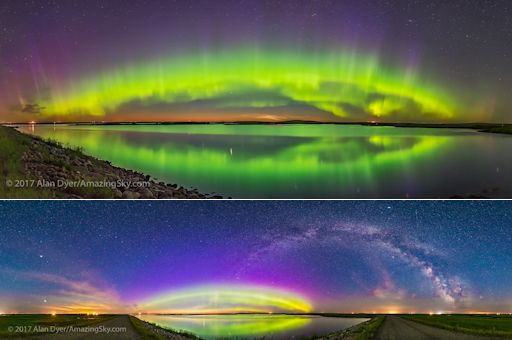
"It was a bit of a surprise," says photographer Alan Dyer. "I positioned myself at the south shore of this prairie lake to shoot what I hoped was going to be a good display of noctilucent clouds over the water. I got a nice aurora instead!"
Bron: http://www.spaceweather.com/
M1.3 klasse zonnevlam. De zonnevlek is net zo breed als Jupiter
Sunspot AR2665 has grown into a behemoth almost as wide as the planet Jupiter: movie. Stretching more than 125,000 km from end to end and containing dozens of dark cores, the active region is an now easy target for backyard solar telescopes. Amateur astronomer Peter Desypris sends this July 9th photo from Syros island, Greece:
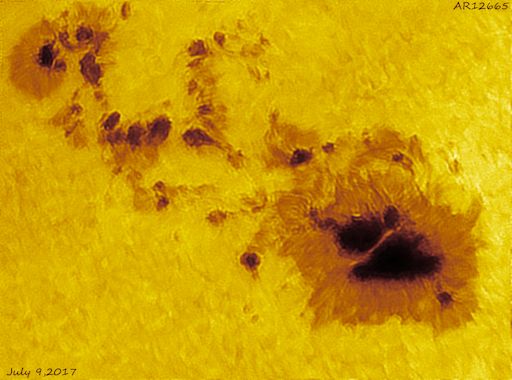
"This is the biggest sunspot of 2017 so far," says Desypris. "I photographed it using an 8'inch LX200 telescope and a safe solar filter."
On July 9th at 0318 UT the big sunspot erupted, producing an M1.3-class solar flare. Telescopes onboard NASA's Solar Dynamics Observatory recorded the explosion's extreme ultraviolet flash:
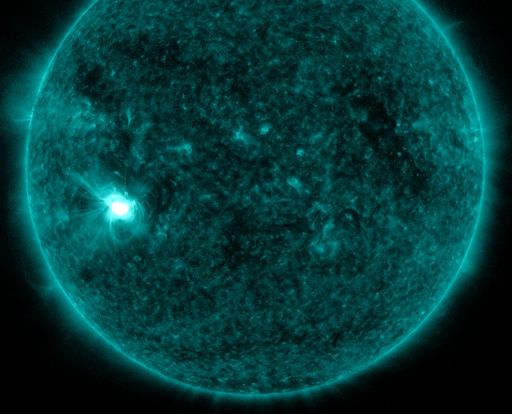
A pulse of UV and X-radiation from the flare ionized the top of Earth's atmosphere. This, in turn, altered the normal propagation of shortwave radio transmissions on the dayside of our planet. A map from NOAA shows the geographical regions affected: mostly Australia and east Asia. People who might have noticed blackouts, fades, and other transmission irregularities include aviators, mariners, and ham radio operators.
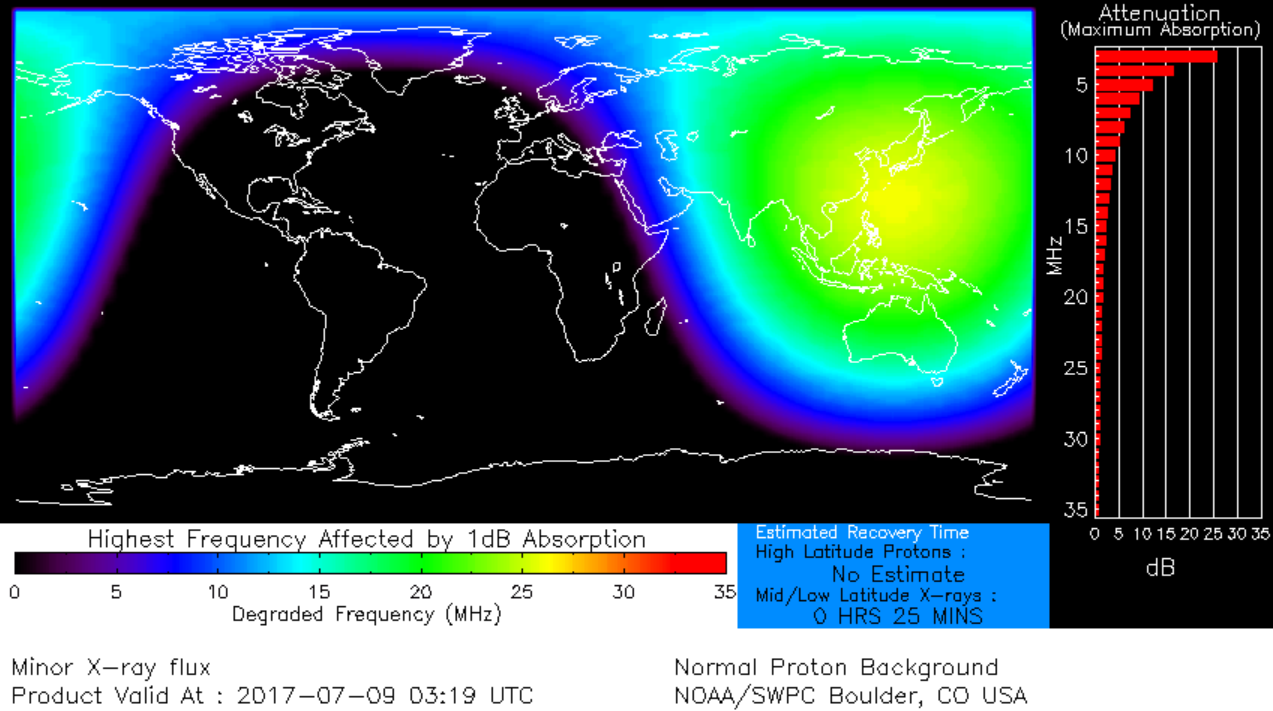
Considering its extreme size, AR2665 has been relatively calm so far. Stronger flares and CMEs could be in the offing, however, as the sunspot continues to grow and turns toward Earth. Stay tuned for updates.
Bron: http://www.spaceweather.com/
M2 klasse zonnevlam
After 3 days of suspenseful quiet, huge sunspot AR2665 finally erupted on July 14th (0209 UT), producing a powerful M2-class solar flare. The explosion was underway for more than two hours and hurled a bright coronal mass ejection (CME) toward Earth. Stay tuned for updates.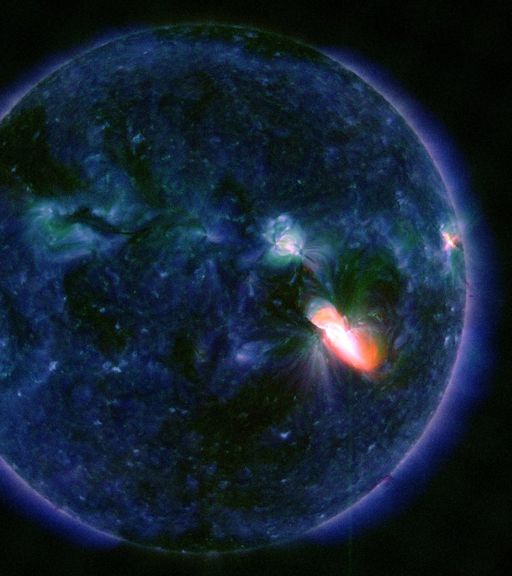
Bron: http://www.spaceweather.com/

http://services.swpc.noaa.gov/images/goes-xray-flux.gif
A long duration M2.4 solar flare was observed around region 2665 in the southwest quadrant beginning at 01:05 UTC (July 14th). The flare was associated with a 10cm Radio Burst (TenFlare) lasting 44 minutes and measuring 130 solar flux units (SFU). A Type IV radio emission was also logged at 02:02 UTC. Updated imagery by SDO suggests a coronal mass ejection (CME) is associated.

http://services.swpc.noaa.gov/images/animations/drap_global/latest.png

http://solarham.net/pictures/archive/jul14_2017_ahead.jpg
Bron: http://solarham.net/
Activiteit op de zon
De aarde zit sinds gisteren in een zonnestorm (max kp 5.) - een G1-klasse zonnestorm, afkomstig van dit coronale gat:
Credit: NASA/SDO.
De impact hiervan op aarde is weer mooi te zien (foto gemaakt in Finland):
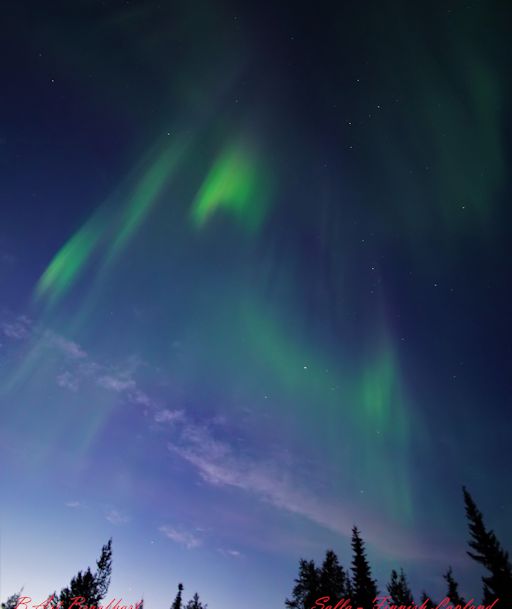
©Braafhart
Tevens is zonnevlek AR2671 aan aardzijde verschenen. Deze zonnevlek heeft een beta- gamma magnetisch veld en daarmee de potentie om M- klasse zonnevlammen te produceren:
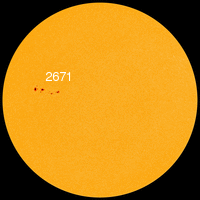
Credit: SDO/HMI

©sohowww.nascom.nasa.gov
Vooralsnog houdt hij zich rustig, dit zal echter veranderen, als er interactie komt tussen de "blauwe" en "rode " gebieden, te zien in de magnetogram hieronder:

We houden het in de gaten....
Een onverwachtte geomagnetische storm
A G2-class geomagnetic storm occurred during the early hours of Aug. 22nd when the interplanetary magnetic field (IMF) near Earth unexpectedly tipped south. This opened a crack in our planet's magnetosphere. Solar wind poured in to fuel the strong but short-lived storm.
http://services.swpc.noaa.gov/images/planetary-k-index.gif

http://services.swpc.noaa.gov/images/geospace-1-day.png
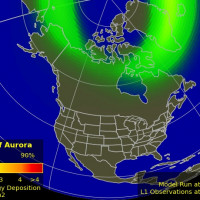
http://www.spaceweather.com/POES/pics/usa_thumb.jpg
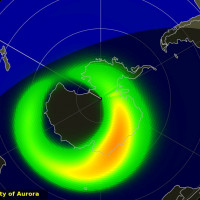
http://www.spaceweather.com/POES/pics/antarctica_thumb.jpg
Bron: http://www.spaceweather.com/
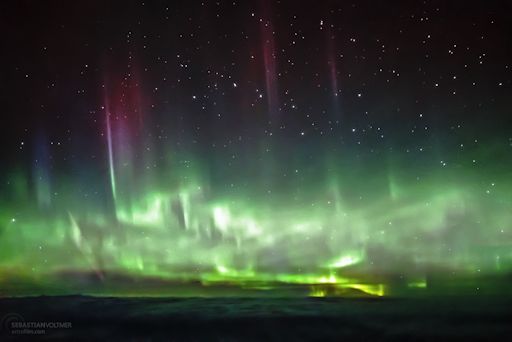
This is a picture taken through the window of an aircraft flying just south of Greenland on August 24th. Photographer Sebastian Voltmer explains: "During our flight from Detroit (USA) to Frankfurt (GER) we saw these impressive and fast-moving Northern Lights. What a fantastic start to the season!"
In addition to the equinox effect, it also helps that Arctic skies are darkening as the midnight sun sets after a long summer. Midnight is once again becoming a velvety-dark canvas where solar wind can paint the Northern Lights.
Bron: http://www.spaceweather.com/
Een X9.3 klasse zonnevlam gisteren, de zwaarste in 10 jaar tijd!
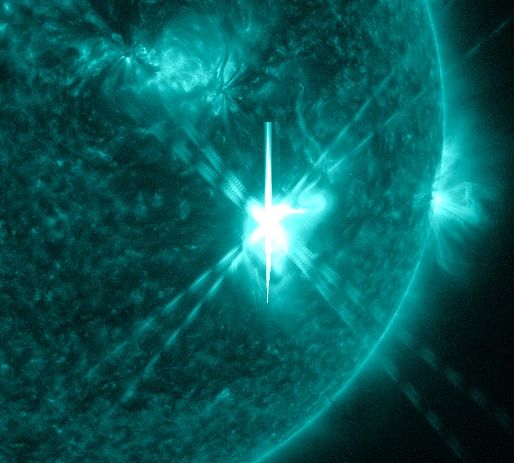
The extreme UV flash from today's X9-class flare. Credit: Solar Dynamics Observatory
On Sept. 6th at 1202 UT, sunspot AR2673 unleashed a major X9.3-class solar flare--the strongest solar flare in more than a decade. X-rays and UV radiation from the blast ionized the top of Earth's atmosphere, causing a strong shortwave radio blackout over Europe, Africa and the Atlantic Ocean: blackout map.
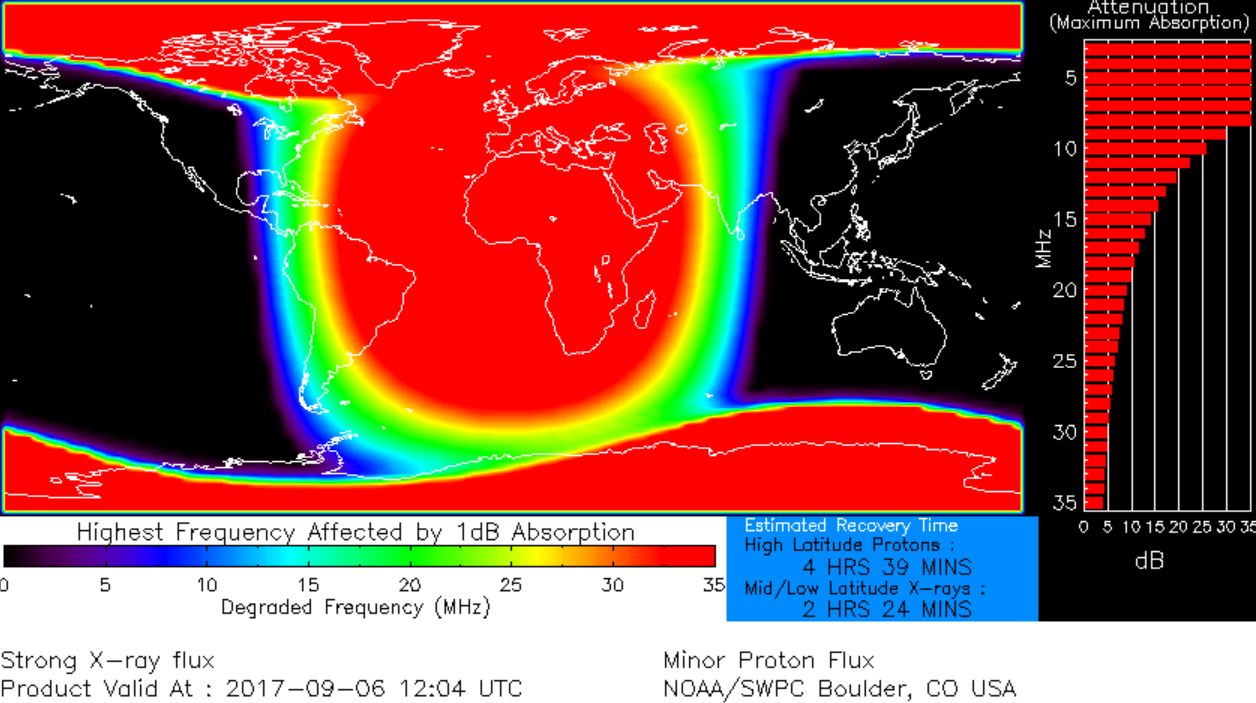
Coronagraph images from the Solar and Heliospheric Observatory confirm that the explosion also produced a coronal mass ejection (CME) with an Earth-directed component. Click to view a movie of the plasma cloud racing away from the sun:
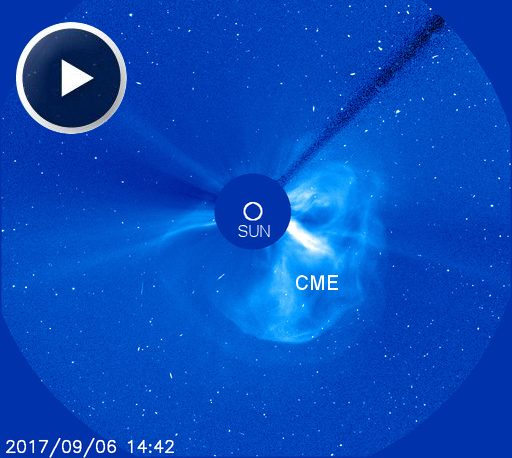
The CME will probably reach our planet on Sept. 8th, bringing with it a chance of G2- or G3-class geomagnetic storms.
Many readers are asking about the historic context of this event. How epic is it? Answer: This is a decade-class flare. A list of the most powerful solar flaresrecorded since 1976 ranks today's flare at #14, tied with a similar explosion in 1990. However, compared to the iconic Carrington Event of 1859, or even the more recent Halloween storms of 2003, this event is relatively mild. Modern power grids, telecommunications, and other sun sensitive technologies should weather the storm with little difficulty.
On the other hand, sky watchers could see some fantastic auroras before the week is over. And ham radio operators will surely be noticing strange propagation effects as the sun exerts its influence on our planet's ionosphere. Stay tuned for updates.
EARTH VS. SOLAR FLARE:
Amateur astronomer Philippe Tosi photographed the sun on Sept. 6th, and his timing was perfect. He caught sunspot AR2673 in mid-explosion, producing the most powerful solar flare in more than a decade.
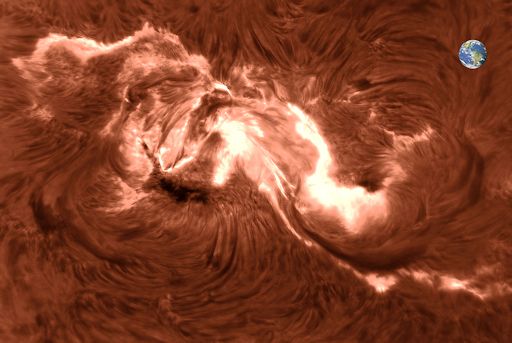
His image of the X9-category blast, with Earth inserted for comparison, highlights the advantages of being 93 million miles away from the sun. The explosion was big enough to swallow our entire planet with room to spare.
Bron: http://www.spaceweather.com/
Hieronder is te zien dat de X9,3 gevolgd werd door een M5.5 klasse zonnevlam.

Hij was deels aardegericht, dat wil zeggen dat we een G2 en G3 klasse zonnestorm kunnen verwachten, die de 8e en de 9e hier zijn impact zal hebben (kp 7).

Aurora borealis is dan hier te zien:


Dit is een livestream vanuit Canada om de aurora borealis te volgen ( op dit moment al aurora's te zien):
http://www.asc-csa.gc.ca/eng/astronomy/auroramax/hd-480.asp
To be continued.....
En weer een X-klasse zonnevlam, deze keer een X 8.2
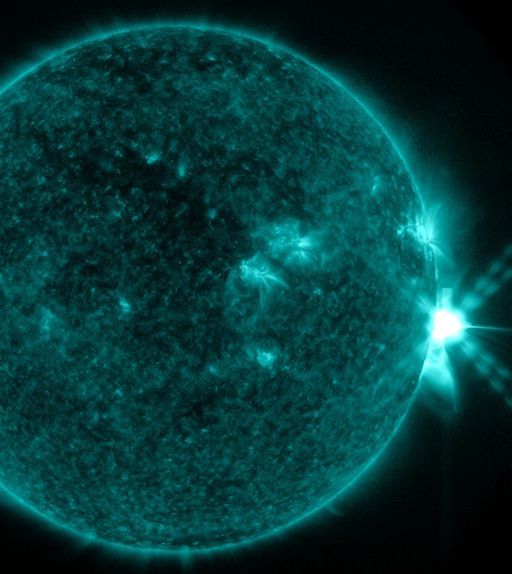
NASA Solar Dynamics Observatory recorded the flare's extreme UV flash
Zo is het lange tijd rustig en op de zon, en zo krijg je een paar machtige zonnevlammen. Na de X9.3 volgde er nu een X8.2 klasse zonnevlam.
Zelfs Lasco C3 voelde deze impact (de ruis in het beeld):
Ook deze uitbarsting zal zijn invloed op de aarde hebben, net zoals de X9.3 (in Alaska had men hier te maken met een G4 klasse zonnestorm en tijdens orkaan Irma had men problemen met de satelliet telefoons). Deze uitten zich o.a. in radio black outs en aurora borealis (en soms ook krachtige aardbevingen, al zijn de meningen hierover verschillend).
Deze uitbarsting zal op aarde een G3 klasse zonnestorm brengen. De eerste impact is al geweest:
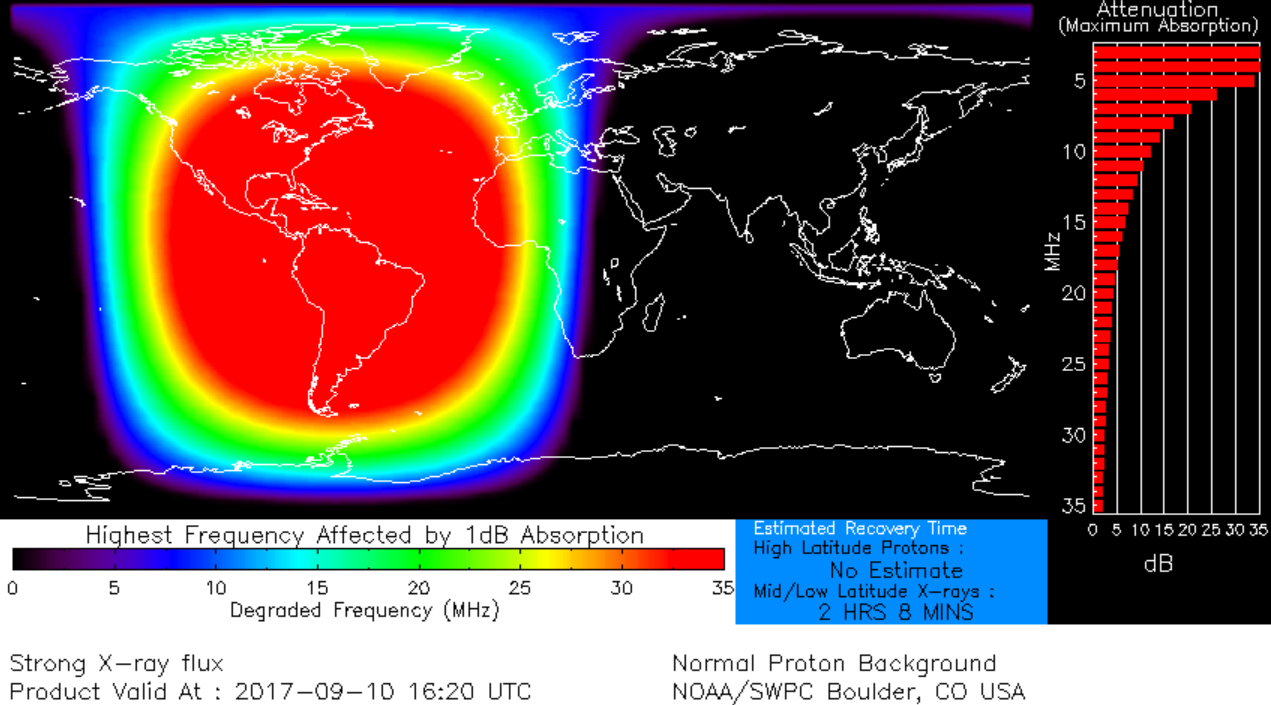
http://www.spaceweather.com/images2017/10sep17/blackoutmap.png?PHPSESSID=s4dfgv0irjd5ile64komjvioe6
De volgende is onderweg.
Daarnaast krijgen we rond 13 september ook nog te maken met de zonnewind afkomstig van het grote coronale gat die nu aarde gericht is:

Credit: SDO/HMI
De komende 0-24 uur is er nog 50 % kans op een X klasse zonnevlam en 75% kans op een M klasse zonnevlam.
Enkele foto's van de impact van de X9.3:
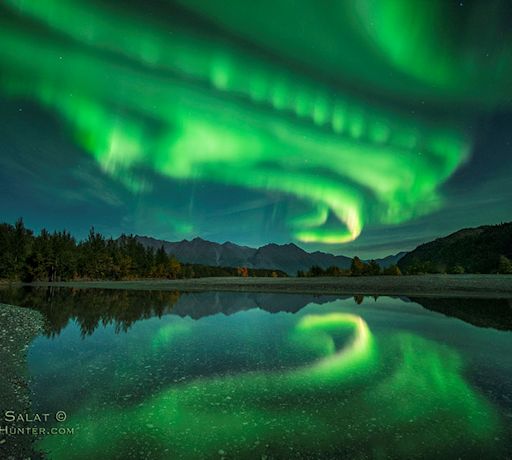
Todd Salat

Taken by Explore the Arctic on September 8, 2017 @ Tromsö

Taken by phil halp on August 9, 2017 @ Tromso, Norway

Taken by TokyoShot on September 8, 2017 @ Sudureyri, Island

Taken by Eva Kristiansen on September 8, 2017 @ Senja, Norway

Taken by Ayumi Bakken on September 8, 2017 @ Fairbanks, Alaska

Taken by Satu Juvonen on September 8, 2017 @ Sodankylä, Finland

Taken by Ole C Salomonsen on September 8, 2017 @ Tromsø, Norway
Bronnen:
http://www.spaceweather.com/
http://solarham.net/
Vandaag/ morgen G2 klasse zonnestorm afkomstig van coronaal gat

SDO
NASA's Solar Dymanics Observatory is monitoring a large, canyon-shaped hole that has opened in the sun's atmosphere. Bisecting almost the entire Earth-facing hemisphere of the sun, the hole is 200,000 km wide and stretches a million km southward from the sun's north pole:

SDO
This is a coronal hole (CH)--a region in the sun's atmosphere where the magnetic field peels back and allows solar wind to escape. Solar wind flowing from this CH faster than 600 km/s is expected to reach our planet on Sept. 27th, sparking at least two days of polar geomagnetic storms.
Despite the impressive scale of this hole, it is nothing unusual. Coronal holes open on a regular basis. We typically see at least one each month. Solar wind streams from coronal holes keep Earth's poles glowing with auroras even during periods of low sunspot number--like now.
Bron: http://www.spaceweather.com/

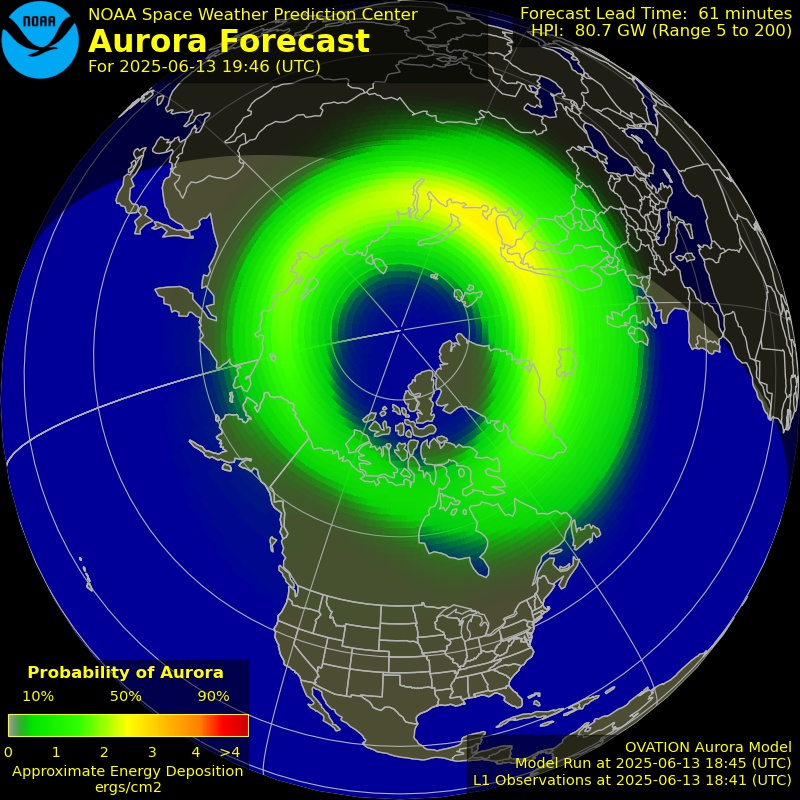
http://services.swpc.noaa.gov/images/aurora-forecast-northern-hemisphere.jpg
Er zijn alweer mooie plaatjes ingezonden:
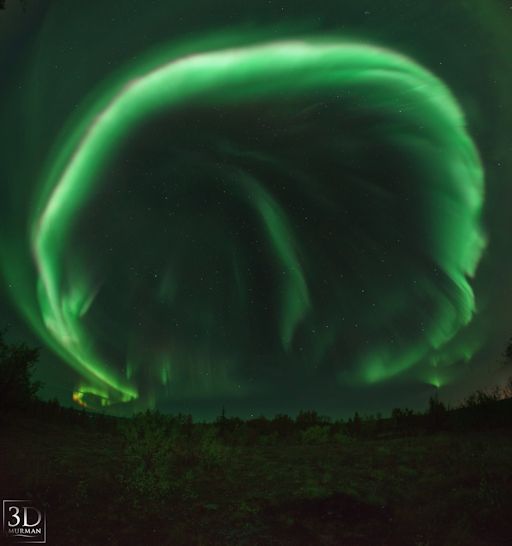
©Dmitry Rak
Op dit moment gaat de zonnewind met 540 km/s en dit zal nog oplopen:
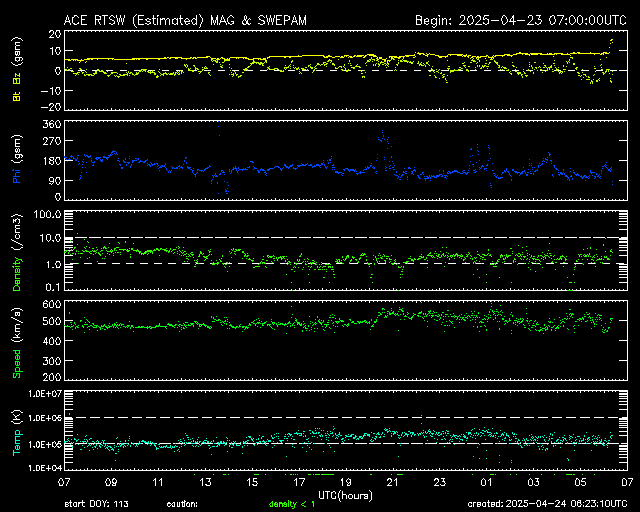
http://services.swpc.noaa.gov/images/ace-mag-swepam-24-hour.gif
Wil je de aurora's live in de gaten houden, hierbij een stream van Yellowknife:
http://www.asc-csa.gc.ca/eng/astronomy/auroramax/hd-480.asp
Het is nu dus even een kwestie van wachten op de mooie beelden....
De zonnestorm is gearriveerd, kp-index 7
Aurora borealis te zien in Scandinavie en Noord Europa en in Amerika tot in Wisconsin en Washington.


http://www.spaceweather.com/POES/pics/usa_thumb.jpg
Gisteren is in Zweden een mooie foto gemaakt van de aurora's in combinatie met een mistboog:
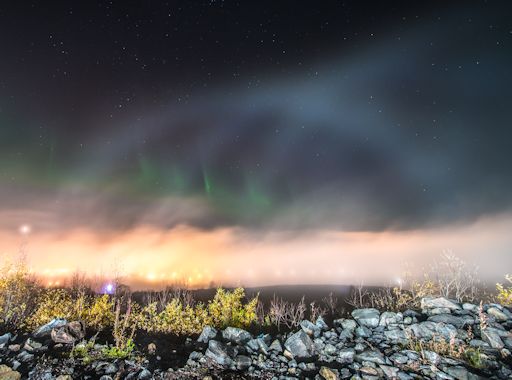
©Mia Stålnacke
Bronnen:
http://www.spaceweather.com/
http://solarham.net/
They only got better. Beams/waves of light overhead and looking nearly due East. #Idaho7B #auroraborealis #northernlights @tamithaskov pic.twitter.com/PfzPuhmKia
— Bonner ARES/RACES (@K7BNR) 28 september 2017
The aurora is crazy good right now! Go outside!! #auroraborealis #northerniowa #northernlights #aurora @TamithaSkov pic.twitter.com/k5riKqCDN1
— Diana Hayungs (@diana_hayungs) 28 september 2017
This is how @SkunkBayWeather DSLR output (very sensitive) looks at Hansville, Kitsap County. #wawx #auroraborealis pic.twitter.com/cvXEWr9oZL
— Morgan Palmer (@MorganKIRO7) 28 september 2017
Vertical to capture #Auroraborealis #livingsky #Saskatchewan @TamithaSkov @aurorawatch @Aurora_Alerts @weathernetwork @ExploreCanada pic.twitter.com/BCH1RU1Nt6
— Valerie J (@ValerieJoyHornr) 28 september 2017
Aurora naked eye visible in northern Iowa. 2240. #Auroraborealis #northerniowa #northernlights @TamithaSkov pic.twitter.com/YLeXbqewEB
— Diana Hayungs (@diana_hayungs) 28 september 2017
#Auroraborealis tonight from home. #Mournes @StormHour @Mournelive @barrabest @WeatherCee @MeaneysWeather @CarlingfordIRE @angie_weather pic.twitter.com/z6WNEBDztF
— Stephen Rooney (@ArtistRooney) 28 september 2017
Anders ga je uit je dak!! #noorderlicht #auroraborealis #northernlights #iceland pic.twitter.com/wvXKHvPROF
— Marloes (@mloes9) 27 september 2017
Speechless. Thanks @SolarHam for the data #northernlights #auroraborealis @OurLapland @OurFinland @ylenews @yleuutiset #kilpisjärvi pic.twitter.com/jyHDoWWSUy
— Gareth Hutton (@GarethHutton) 27 september 2017

 Uitbarstingen van de zon en aurora borealis
Uitbarstingen van de zon en aurora borealis




